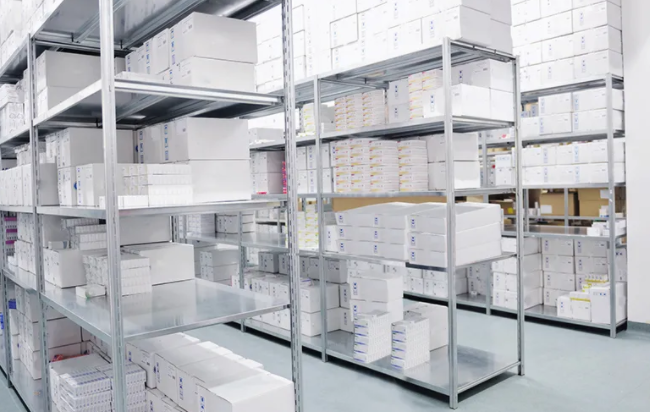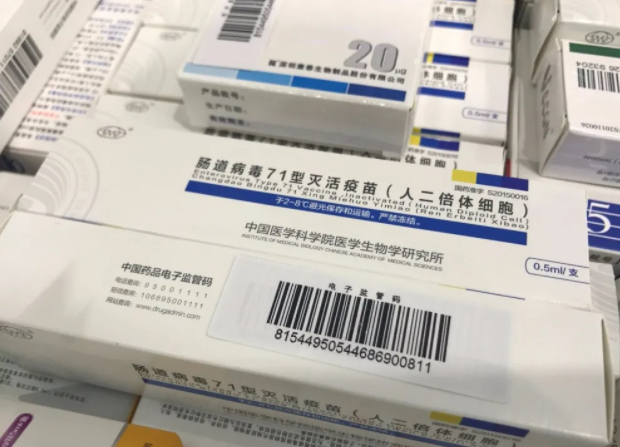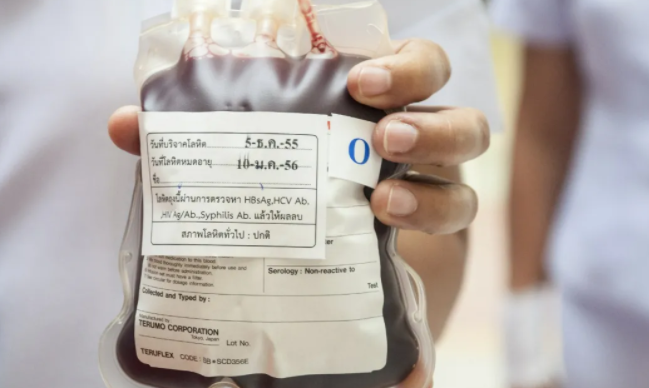Since many vaccines need to be in a low temperature environment during the whole process of production, storage and transportation, special labels are needed for labeling. Such labels are usually called cold chain labels. The cold chain label is a special member of the label family, mainly because this label has special requirements for materials and processing environments. So, what are the specialties of cold chain labels in the selection and processing of materials?
Cold chain label material requirements
Due to the long process time of cold chain logistics and frequent environmental changes, it is easy to cause problems such as dampness, wear, or blurred printing information affecting product traceability. Therefore, cold chain labels have high requirements on the performance of label materials. Generally speaking, cold chain labels require that the material can be used normally at -25°C, and the glue viscosity of the label should also be used normally. This requirement can be said to be extremely stringent on the face material and glue of the label.

Many cold chain labels require variable information to be printed on the surface of the label, and it is required that the information printed on the label surface cannot be blurred or faded in a low temperature environment. The printed barcode or QR code can still have good readability after long-term low-temperature storage. . Generally speaking, cold chain label materials have coatings on the surface. This coating is mainly used to improve the adhesion of the ink and the printing ribbon, and to ensure that the ink on the label surface will not fall off under the long-term low-temperature storage environment after labeling. The printed content cannot be faded.
At the same time, since many cold chain products need to be labeled in a low temperature environment, cold chain labels require glue to meet the requirements of low temperature labeling. We know that the glue of the self-adhesive material can only exert its viscosity at room temperature. In a low temperature environment, the fluidity of the glue will decrease, resulting in a sharp drop in the viscosity of the glue, thereby affecting the labeling effect. Conventional self-adhesive glue cannot meet the application requirements of cold chain labels, so most cold chain labels will use special low-temperature glue. The characteristic of this glue is that it can still maintain good viscosity in a low temperature environment, which can meet the labeling needs of cold chain labels in low temperature environments. However, on the one hand, the high price of low-temperature glue will increase the cost of cold-chain labels. At the same time, some low-temperature glues are not suitable for use at room temperature. If they are used at room temperature, their viscosity will decrease. At present, the high-cost low-temperature glue cold chain label is mainly used in high-end fields such as pharmaceutical vaccines. However, in food, logistics and other fields, most of the solutions are solved by placing the outer packaging at room temperature for 24 hours after labeling, and after the label has maximized its viscosity, it is packaged in a low-temperature environment.
Now many large label material suppliers have developed mature products that can fully meet cold chain applications in various fields. For example, a well-known foreign brand sticker supplier has launched a new low-temperature cold-chain label series. The application temperature can reach -25°C under ideal conditions. It can be used in various low-temperature environments such as cold-chain logistics, frozen food packaging and winter northern logistics. The first-class viscosity performance can be achieved in a refrigerated environment at -10°C to 0°C or in a freezing environment at -18°C to -25°C.

Cold chain label ink requirements
We know that most vaccines need to be stored and transported in a low temperature environment. In order to ensure that the vaccine is kept in a low temperature environment during storage and transportation, a cold chain label is required to protect it. Because one of the functions of the cold chain label is that the ink will change color at room temperature, and this color change is irreversible, that is to say, once the vaccine is stored at room temperature for a certain period of time, the color on the label will change, thus reminding medical care. The storage environment of the vaccine has changed. This kind of function is usually realized by special ink. At present, my country's label printing and processing is still mainly based on letterpress printing and flexographic printing. As far as the author knows, there are matching color-changing inks for these two mainstream printing methods, but the cost of the ink is higher, and it is not suitable for large-area printing. Most of them are used to print some simpler patterns, and the main function is to monitor the environment. Changes in temperature.
Cold chain label processing and transportation requirements
At present, there are two types of cold chain labels: one is a full cold chain label, and the other is a semi-cold chain label. Semi-cold chain label refers to the label can be produced and processed in a normal temperature environment, and subsequent labeling can also be carried out in a normal temperature environment, but the product needs to be stored in a low temperature environment after labeling. The requirements for semi-cold-chain labels are relatively low, and they are mainly used in food, logistics and other industries. Generally, semi-cold-chain labels do not have the function of monitoring environmental temperature changes. Full cold chain label means that the label needs to be produced and processed in a low temperature environment, and subsequent use and transportation also need to be carried out in a low temperature environment. The label surface is printed with temperature-sensitive ink, and the color of the ink will change irreversibly after the ambient temperature changes (usually the temperature rises). This tag has the function of monitoring changes in ambient temperature. Therefore, the whole process of production and subsequent use needs to be carried out in a low temperature environment.

The problem that needs to be solved here is that usually the temperature of the printing factory workshop is required to be 20℃~25℃, because the printing machine can work normally at this temperature, but the full cold chain label cannot be produced under this temperature condition, so how to solve this What about the problem? We can solve it by step-by-step processing. Namely: complete the other processes of the label in a normal temperature environment, and finally complete the final process in a low temperature environment, and complete the quality inspection of the label in a low temperature environment after the processing is completed, and finally put it in a low-temperature refrigerator for storage. Because the full cold chain label processing process is more complicated and requires higher environmental requirements, the cost is also higher. At present, this kind of label is mainly used in high-end fields such as medical vaccines.






